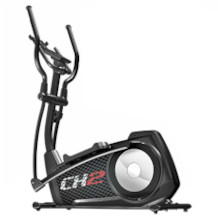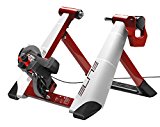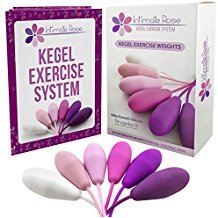Mini trampoline purchasing advice: how to choose the right product
- What You Need Know
- Mini trampolines can be set up and used indoors thanks to their compact size.
- They are mainly intended as fitness equipment and are used for cardio training.
- One of the most important features of a mini trampoline is its suspension: it consists of either steel springs or rubber ropes.
- The equipment is too small for acrobatic jumps and has too little catapult effect.
- The maximum load capacity of the trampoline should be significantly higher than your body weight.
A small-sized trampoline
Bouncing is not only fun for children. If you grow out of the age of the inflatable trampoline and bouncy castles, it’s time to switch to a more age-appropriate type of trampoline, such as a garden trampoline. There is a suitable piece of equipment for every jumping enthusiast. Since 2000, trampolining has even been an Olympic sport. For this purpose, competition trampolines are used that allow a high jump height.
Mini trampolines are also suitable for adults. The small round trampolines fit into any room and can therefore often be found in fitness studios or private homes, either set up or stowed away in the corner to save space. This is why they are also known as indoor trampolines. Such equipment is not intended for somersaults or high jumps, mainly because of its small jumping surface.
Mini trampolines with a diameter of about one metre are considered fitness equipment and are also called fitness trampolines. Mini trampolines are also used for apparatus gymnastics. However, these are usually square and are set up with an angle of inclination. In contrast to gymnastics, where trampolines with a run-up are used as a jumping aid, training with conventional mini trampolines aims to improve endurance or coordination and balance.
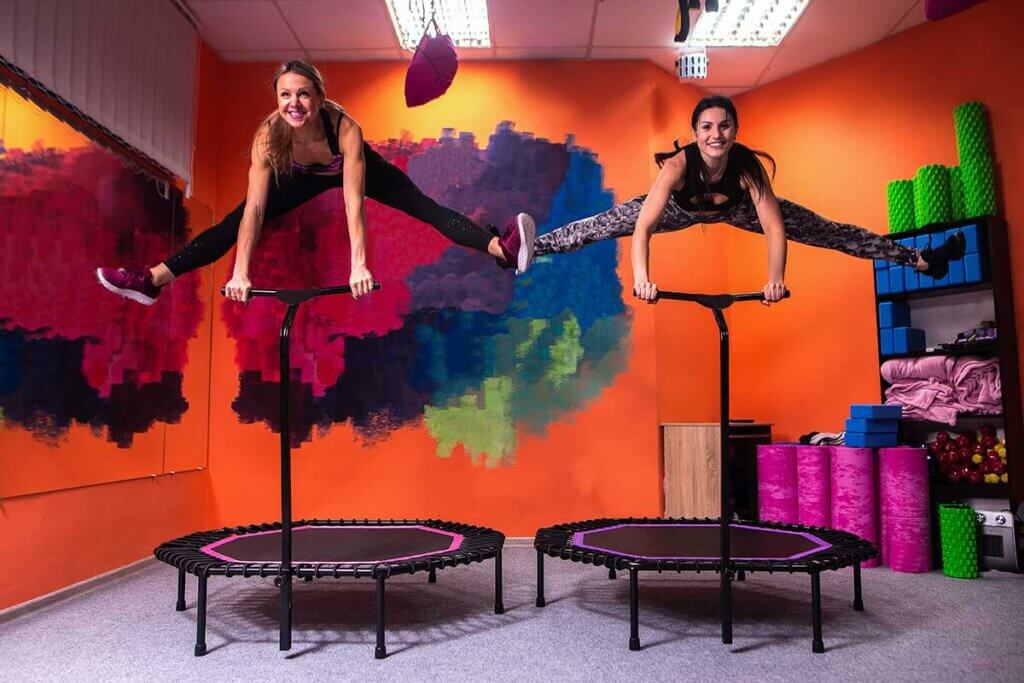
Advantages of a mini trampoline
Compared to other types of trampolines, mini trampolines are particularly inexpensive. Entry-level models are available for as little as 50 euros. What’s more, you don’t need a garden or much space for it. As long as the device fits in the room and the ceiling is high enough that you do not hit your head when jumping, you can use the trampoline anywhere. Most users want to improve their fitness or increase their calorie consumption with trampoline training. Compared to other endurance sports like jogging, trampolining is easy on the joints. The fun factor should also not be underestimated.
Particularly high jumps and sophisticated tricks are not recommended with the equipment. For one thing, the catapult effect is not enough to jump very high, and for another, the jumping surface is too small to cushion a missed jump. Last but not least, even children can only use the trampoline individually.
Type of suspension
Probably the most important feature of a mini trampoline is its suspension, as it has a significant influence on the feeling of jumping. Two types of suspension are used in the manufacture of fitness trampolines, namely steel springs and rubber bands. There is no universally better type of suspension. The choice mainly depends on the user’s physical condition and personal preferences.
Steel springs
Steel springs are more common than rubber bands. There is a wide variety of steel spring trampolines, especially in the lower price ranges. Steel springs are very resilient and durable. Because the suspension is slightly harder than rubber bands, you can jump on it faster and thus burn more calories.
However, for people with joint problems, the hard suspension is not advantageous. As soon as the steel spring is fully extended, sinking into the jumping sheet comes to an abrupt stop and you are catapulted back up. This can put strain on sensitive joints. Sooner or later, the steel springs are also likely to start squeaking. In addition, steel springs are hard and angular. If you land on the springs despite having an edge protector, you could be injured.
Pro points
- Resilient
- Cheap
- Long-lasting
- Quick jumps possible
Drawbacks
- Not as easy on the joints as rubber bands
- Squeaking noise
- Risk of injury
Rubber bands
Many users prefer the jumping feeling of a rubber band suspension – also called rubber ropes. Trampolines with rubber bands are gentler, i.e. the jumping mat sinks in deeper. This makes them particularly easy on the joints. Since a single jump requires more strength but is slower, rubber band trampolines strengthen the muscles more effectively and offer the user a little more control. Squeaking noises are not produced with such equipment. If a different degree of hardness is desired, you can simply replace the rubber bands with ones of a different hardness.
Trampolines with rubber bands are often more expensive than models with steel suspension. Added to this are the maintenance costs: depending on how intensively you use the trampoline, the rubber bands will have to be replaced sooner or later as they stretch over time. Apart from the costs, changing the bands also means a certain amount of maintenance.
Pro points
- Particularly easy on the joints
- More effective training for the muscles
- Quiet
- Rubber bands can be replaced
Drawbacks
- Expensive
- Maintenance costs and effort
Other purchase criteria
The load capacity of the mini trampoline and its size are particularly important. If the trampoline does not have a fixed place in your home, it should also be able to be stored in a space-saving way. For safety reasons, you should also make sure that the feet are rubberised.
Jumping sheet
Elastic fabric is used for the production of jumping surfaces. Either polypropylene or 2-string nylon is used. The first material is cheaper, more skin-friendly and easy to clean, but 2-string nylon is air-permeable, remains non-slip in water or sweat and generally has better jumping properties. Both fabrics do not tear even during intensive jumping, as long as you do not damage the fabric with sharp or edged objects. The weather resistance of jumping cloths is limited: UV radiation as well as water and ice could damage the material in the long run. However, this is rarely a problem with mini trampolines. After all, when used indoors, they are not exposed to the weather. If they are used outdoors, they can be stored away gently after use.
As a wearing part, the jumping sheet has to be replaced sooner or later. When replacing it, you should above all make sure that it is the right size. Manufacturers usually specify both the diameter when tensioned and when untensioned. It must also have the correct number of spring eyelets for your mini trampoline and be strong enough to support your weight.
Load capacity
The load capacity of a mini trampoline is given in kilograms and ranges from 100 to 200 kilograms, depending on the model. Although your weight remains the same when you jump, the force exerted on the jumping mat and suspension when you land on the trampoline is higher than your body weight. Therefore, make sure that the trampoline can withstand a significantly higher weight than your body weight.
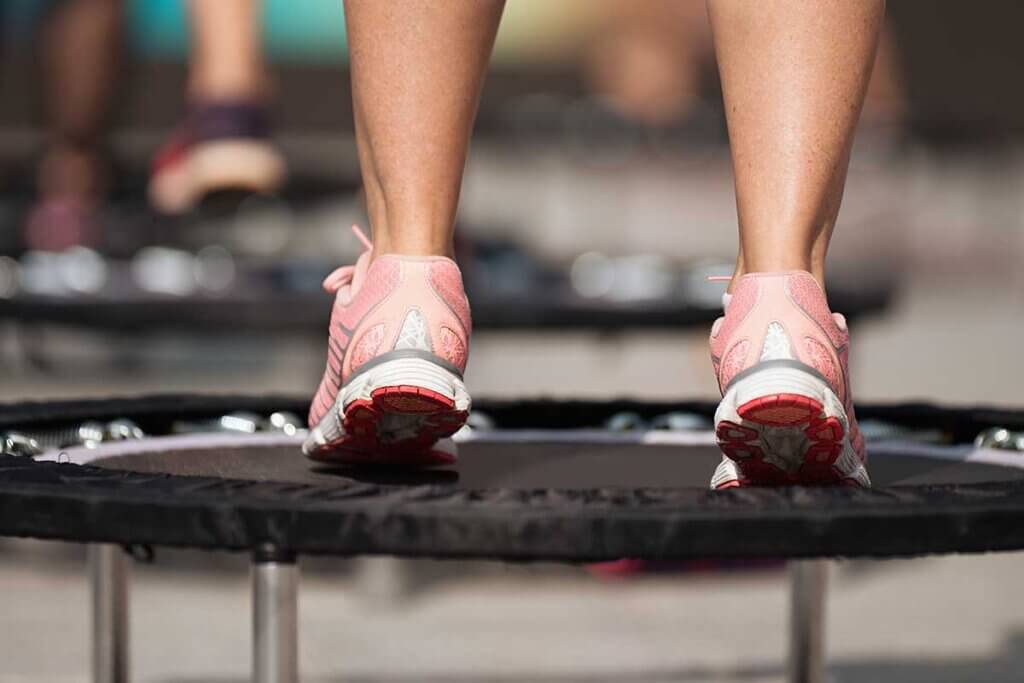
Dimensions
Two measurements are relevant for the purchase decision for mini trampolines, namely the height of the legs and the diameter of the trampoline. The height is usually between 15 and 40 centimetres. Since the jumping cloth expands downwards when you come up, there must be some space underneath the trampoline so that you do not hit the ground. Accordingly, mini trampolines with a soft suspension should be slightly larger than, for example, rigid models with steel springs. However, you do not have to worry about this: Manufacturers usually make sure that the jumping net does not reach the ground even when it is stretched to the maximum.
The wider the diameter of the jumping net, the freer you can move on the mini trampoline. If the jumping net is too small, you will have little room if you accidentally land slightly off-centre. For certain exercises, such as jumping jacks, which require a wide leg position, it can be too narrow if the diameter is small. Mini trampolines with a diameter of 90 to 125 centimetres are commercially available. The only disadvantage of a larger diameter is that the equipment takes up more space.
The weight of a mini trampoline affects its stability and transport. The heavier the equipment, the less likely it is to shift when jumping. However, a heavy piece of equipment goes hand in hand with more strenuous transport. If the mini trampoline is mainly used stationary, it should be a little heavier. A light model is more comfortable for frequent transport. Fitness trampolines weigh between 5 and 15 kilograms. Most machines weigh around 10 kilograms.
Flexibility
What makes mini trampolines particularly practical is that they can be stored or transported easily and in a space-saving way. If you don’t have enough space for a fixed location for the trampoline, you can store it under the bed or in the cellar after each use. If you prefer to train outdoors, you can simply take it to the park. Foldable models are particularly practical in this case. Foldable” usually means the legs. This turns the mini trampoline into a flat disc that fits into almost any corner. Rarely, even the trampoline frame is foldable.
Stability
Every trampoline must be stable. Apart from the weight, the legs play a major role. On the one hand, the number of legs is relevant. More legs provide more stability. The trampoline should not have less than five legs. Screwable legs are more stable than foldable ones. However, the most important thing is that they have an anti-slip coating, i.e. a rubber coating. This prevents the sports equipment from slipping away from under your feet while you are in the air. In addition, the feet adhere better to the ground, which prevents the trampoline from “bouncing” with you. The fact that with rubberised feet there are no scratches on the parquet is an added bonus.
Handhold
Some mini trampolines come with a grab handle. This is a bar with two handles, comparable to the steering wheel of a pedal scooter. This bar is attached to the frame of the trampoline. For those who are not yet confident on the trampoline or have stability problems, a grab rail is a helpful support. Such a grab rail is usually height-adjustable. When setting up, make sure that your elbows form an angle of about 90 degrees when holding the handles. Advanced users will do well without a grab rail unless they use it as a support for acrobatic exercises.
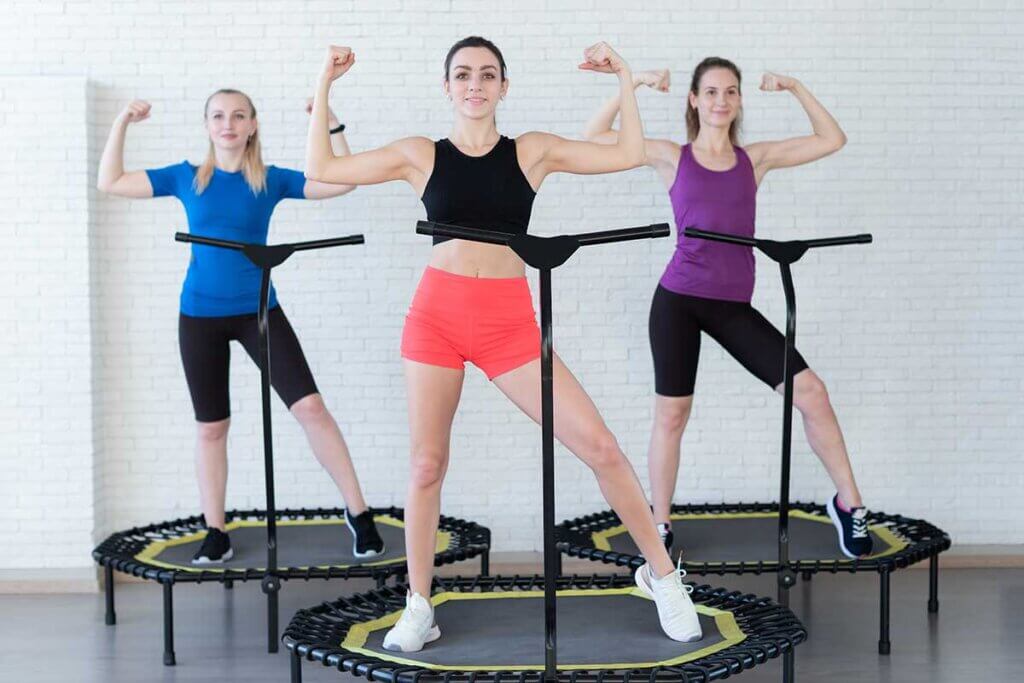
Accessories
Many mini-trampolines come with a DVD showing various exercises. Increasingly, however, the DVD is being replaced by apps and YouTube videos, so that some models can even be called a smart trampoline. The smart features of a mini trampoline include, above all, a jump counter. On a screen that is mounted on the grab handle, you can read information regarding your training session and play training videos to follow along. With an app interface, you can track your performance over a longer period of time. Some models with a handgrip also have a mobile phone holder and a water bottle holder.
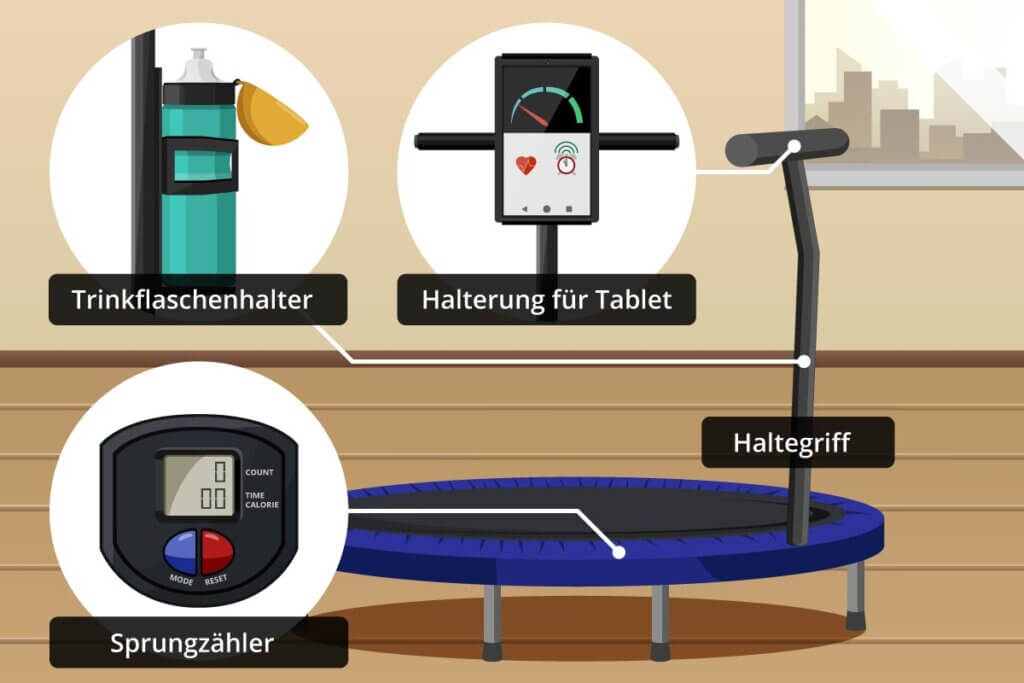
Safety
Many mini trampolines are TÜV or GS certified. To ensure safe use, you should also pay attention to where the trampoline is set up. For example, the floor should be smooth so that the anti-slip feet can adhere to it effectively. Also pay attention to the ceiling height of the room so that you do not hit your head against it when jumping. Last but not least, an edge protector is a useful safety device, especially with steel springs. The springs are hard and can hurt your foot if you land on them.
Why is exercising with a mini trampoline useful?
Fitness trampolining is a form of endurance training. The repeated small jumps quickly make even trained users sweat in the long run. Especially for people for whom conventional endurance sports such as jogging are out of the question for various reasons, trampolining is ideal: after all, the activity is easy on the joints and also promotes coordination and a sense of balance. Even for people who are not really into sports, a mini trampoline is worth a try. Many users have much more fun with it than with other endurance sports such as cycling or swimming. In addition, trampolining can be done in the comfort of your own home.
You can not only jump up and down on such a trampoline. Be it in the form of included DVDs, apps or YouTube videos, you can quickly find numerous videos showing different exercises, for every age group and fitness level.


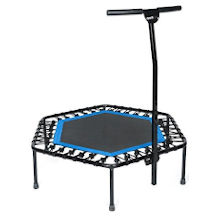
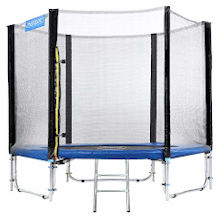

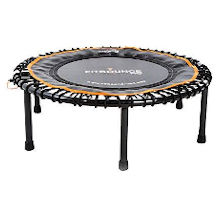
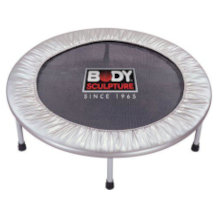
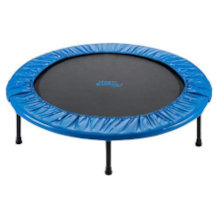
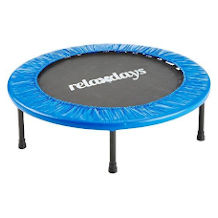
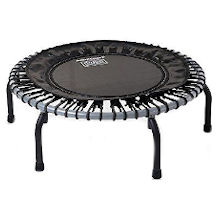
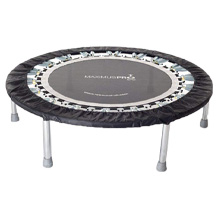
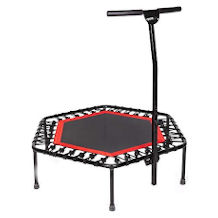



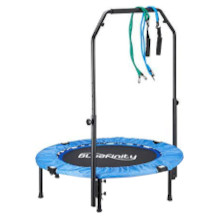
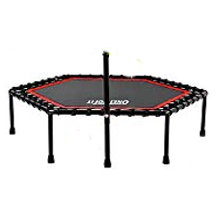
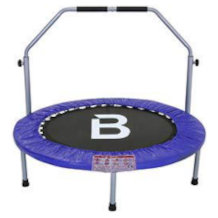

 4,665 reviews
4,665 reviews

